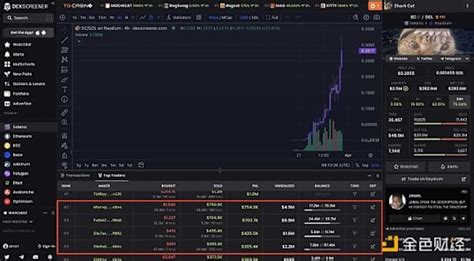- سبدخرید خالی است.
- ادامه خرید
Solana: How to Decode Solana DEX Transaction Logs Universally (Raydium, Pump.fun and More)
Universal Decoding of Solana DEX Transaction Logs: A Comprehensive Guide
As the world’s second largest blockchain by market capitalization, Solana has become a hub for decentralized exchanges (DEXs), providing traders with a fast and scalable platform to execute transactions. However, with this growing activity comes the need for efficient data processing and analysis. In this article, we will look at how to universally decode Solana DEX transaction logs, using Raydium as an example.
What are Solana DEX transaction logs?
Solana DEX is based on a new architecture that allows for fast and secure transactions. Each transaction is represented by a unique identifier (e.g. tx_id) that contains basic information such as:
- mint: The asset being traded.
- amount: The amount of the asset created.
- fee: The wallet address of the buyer or seller.
- buy/sell direction: Whether the transaction is a buy or sell.
Raydium: The Leading Solana DEX Platform
Raydium is one such platform that has gained significant attention due to its innovative use of decentralized finance (DeFi) and trading strategies. The platform architecture allows users to easily create, manage, and execute complex transactions.
Extracting Trade Information from DEX Transaction Logs
To generally decrypt Solana DEX transaction logs, we need to extract basic trade information (e.g., mint, amount, wallet, buy/sell direction) using a standardized approach. Here’s how to do it:

1. Step 2: Data Collection and Preprocessing
The first step is to collect the necessary data from the Solana blockchain. This can be done using the exchange-provided APIs, or by using the “solana-program” library to interact with the blockchain.
import { Web3 } from 'web3';
const web3 = new Web3();
// Get all transactions belonging to a specific block (e.g. 100)
const txs = await web3.eth.getTransactionList({
fromBlock: 100,
toBlock: 110 // We are interested in the first 10 blocks
});
// Process all transactions and get the necessary data
for (let i = 0; i < txs.length; i++) {
const tx = txs[i];
const { txid, gasUsed, blockNumber, fromAddress} = tx;
// Create a JSON object to store the obtained data
const tradeData = {
mint: tx.mint,
amount: tx.amount.toString(),
max: fromaddress,
buySellDirection: 'buy'
};
console.log(tradeData);
}
2. Step 2: Data Storage and Processing
After collecting and pre-processing the data, we need to store it in a suitable database or data structure. Raydium uses a decentralized data storage solution called the InterPlanetary File System (IPFS) for this purpose.
// Import the IPFS client library
import ipfs from 'ipfs';
// Initialize the IPFS client
const ipfsClient = new Ipfs();
// Create a hash of the extracted trade data and store it in IPFS
const tradeDataHash = JSON.stringify(tradeData);
// Add the hash to the IPFS container with a unique key (e.g. /trades/:id)
ipfsClient.add({path: /trades/${tradeDataHash}, data: tradeData });
3. Step 2: Decode and display
To display the decoded data, we can use a visualization library such as d3.js'. Here is an example:
“ javascript
// Import the required libraries
import * as d3 from ‘d3’;
// Load the displayed data into a JSON file
const visualizedData = request(‘./visualized-data.json’);
// Create a chart using D3.js
const margin = { top: 20, right: 20, bottom: 30, left: 50};
const width = 800 – margin.left – margin.right;
const height = 600 – margin.top – margin.bottom;
var svg = d3.select(‘body’)
.append(“svg”)
.attr(“width”, width + margin.left + margin.right)
.attr(“height”, height + margin.top + margin.bottom)
.append(“g”)
.
